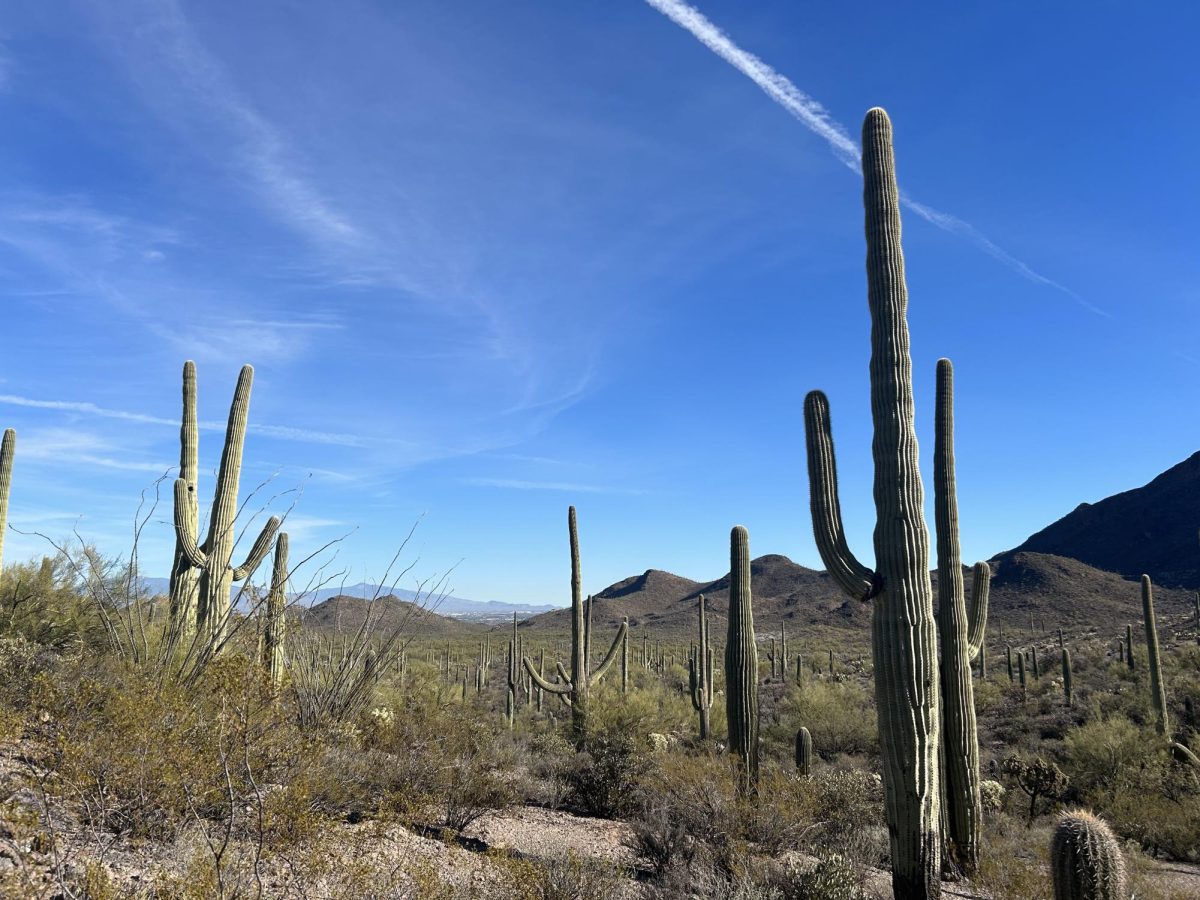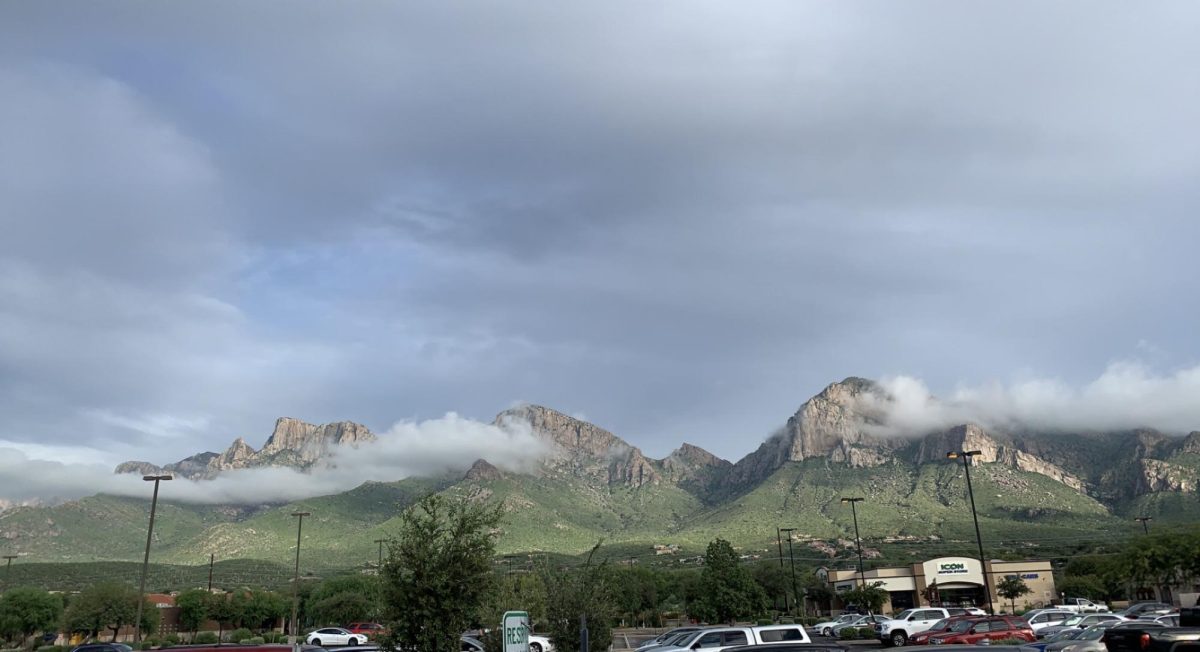
With his gelled brown hair, ironic T-shirt and architectural glasses, climate scientist Nick McKay looks more Silicon Valley than microscope drone.
In summer 2010, the 28-year-old University of Arizona Ph.D. student got a call from his adviser, Dr. Jonathan Overpeck, a world-famous climate scientist at the UA who shared the Nobel Prize in 2007 for his work with the Intergovernmental Panel on Climate Change. Overpeck was studying climate model simulations of the last interglacial period—also called the LIG—the warm period that preceded the most recent ice age.
“Nick, I’ve got this idea,” Overpeck said. “I think if you work really hard at it, you could be done in a week.”
In the end, the summer side project grew to consume most of the next year of McKay’s graduate career.
Overpeck and his colleague, Bette Otto-Bliesner, a senior scientist at the National Center for Atmospheric Research in Boulder, Colo., had noticed a curious pattern: All of the ocean temperatures that the climate model reported were colder than the present day, even though the existing wisdom was that the LIG was much warmer.
The LIG is thought to be so warm in part because the sea level was 28 feet higher back then. The modeling results raised concern that sea levels could rise because the planet during the LIG was about the same temperature as today.
McKay is an “inside” geologist, whose entire Ph.D. could be done without leaving the geosciences building. The closest he ever gets to real rocks—for research purposes, anyway—is when he pulls out lake cores that live in a freezer room on the third floor.
Most of his research is done at a computer in a windowless office that he shares with two other rather hip-looking 20-somethings. The office glows with enormous white Macintosh monitors.
McKay has had a luminous graduate career: fellowships, prize-winning talks, multiple papers published in prestigious journals. He keeps a lot of balls in the air. Over his desk is a bulletin board with pictures of his family and a collage of foam letters that says, “I love Dad.”
At Overpeck’s urging, McKay set out to explain why the geology and the model were in disagreement. In any climate modeling study, there exists a possibility that the model is in error. But simple mathematical errors are rarely the whole picture, so McKay set out to find a real, physical explanation for this cold ocean anomaly.
He spent the next month compiling 176 paleoclimate records taken from lake, ocean and ice cores around the world. Each record spanned 125,000 years, from the warmest part of the LIG to the present warm period, known as the Holocene, the last 10,000 years of the Earth’s history and in general a relatively warm period in between ice ages.
That compilation of paleoclimate data did show that the LIG was warmer than today—but not by much.
“It was a little warmer, but the data was really, really noisy,” McKay said. “You would see one record that said it was 6 degrees Celsius warmer, and another right next to it that said 6C colder, even though they were the same age. On average, it worked out to just a little bit warmer during the last interglacial—about 0.7 degrees C.”
In other words, the LIG probably was not nearly as warm as most scientists thought.
Because the sea level during the LIG was higher than today, “there are places you can go and see corals from 125,000 years ago that are up on land,” McKay said. “You can see overhead these wave-cut notches, rocks that were obviously eroded by waves.”
This has been interpreted as evidence for much warmer surface and ocean temperatures because there are only two ways to change the volume of the ocean: thermally expand the existing ocean water or melt a lot of ice into the sea.
But if the Earth wasn’t much warmer 125,000 years ago than it is today, then thermal expansion couldn’t be a major contributor to sea-level rise. That means ice melt must have played a much larger role.
In the paper he published in the July Geophysical Research Letters (with Overpeck and Otto-Bliesner), McKay showed that even under the most extreme possible warming conditions allowed by his data, thermal expansion probably accounted for only a small fraction of the total sea-level rise.
“At every step I was as conservative as I could be,” McKay said. “I thought, ‘What is the most the sea level could have gone up?’ For every record, I picked the warmest 5,000-year period [of the LIG], and I assumed that warming happened all the way down to 2,000 meters in the ocean, which it probably didn’t.”
Even under these exaggerated conditions, McKay found that the sea expanded only enough to raise the sea level by 1.5 feet.
So where did all the extra water come from? Almost certainly from melted ice, Otto-Bliesner said.
“It has to have come from both Greenland and Antarctica,” she added. “Probably both. We’re pretty sure that Greenland had to have contributed some of the sea-level rise—probably 2 to 3 meters is the consensus now. So with the estimates of 6 to 7 meters, the rest had to have come from Antarctica.”
Model simulations of the LIG suggest that partial melting of Greenland along with complete melting of the West Antarctic Ice Sheet could account for virtually all the remaining 26.5 feet of sea-level rise. In other words, much of Greenland and Antarctica might have melted away under conditions not much warmer than today’s.
Still open is the question that motivated this study to begin with: Why do the models show such different ocean temperatures from the geologic record? McKay speculates that the explanation lies in the slightly different “seasons” Earth experienced 125,000 years ago. During the LIG, the Earth’s orbit around the sun was slightly different, causing the Northern Hemisphere to experience a warmer summer and colder winter than it does now.
A warmer atmosphere can also retain more water, which leads to a greenhouse effect that may have amplified that warming.
Since most paleoclimate records come from land in the Northern Hemisphere and are biased toward the growing season, the geologic evidence from that time period looks especially warm. On the other hand, most of Earth’s ocean is in the Southern Hemisphere, so ocean temperatures overall appear about the same or even colder. It is possible, therefore, that the climate models and the geologic record are both “correct.”
McKay’s study was significant because it took a global view, Otto-Bliesner said. “Often we just get these individual records, but [McKay] was able to make estimates of how much the ocean warmed or not on a global basis,” she said. “This helps us to see where the model is doing well, or not—and I think that’s really useful.”
McKay said the take-home message from his study is that the last time ice caps melted, the sea level rose by more than 28 feet, even though it probably was not much warmer than the modern day.
And because much of the world’s population lives close to sea level, “this is going to have huge impacts,” McKay said. “Whether sea levels are rising for natural or anthropogenic reasons, you’re still going to be underwater sooner or later.









